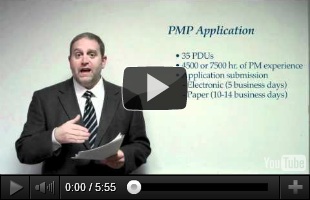Project quality has many facets depending on the type of project and the quality objectives. A few common metrics used are guidelines and standards. Most people understand the difference between the two. However, guidelines can be confused with standards. Guidelines are just that, an idea or parameter to stay within. Standards are a more exact objective to be met. It is well worth while to make sure people are clear on the differences and expectations of each. Otherwise, a small misunderstanding can be costly. As an example, a sorting team was tasked with looking through thousands of figurines to inspect for defects. The guideline says the figurines can have up to 3 blemishes on the front portion, no larger than 2 cm each as long as they are not on the face. The Standard stated if there is only one blemish allowed in the facial area and they must be less than 1 cm. Well, an entire shift didn’t understand the difference between the guidelines and standards and inadvertently allowed figurines to pass through that had single blemishes on the face up to 2 cm…double the allowed size. This was caught during a random audit and thousands of figurines had to be re-sorted costing the company hours of productivity, not to mention money. As cliché as it may sound, never assume anything. Communication is vital. A simple misunderstanding can cost an entire project.
Language and Terminology of PMI
Planning to take the Project Management Professional (PMP) exam from Project Management Institute? Excellent move! That’s just the right medicine for today’s tight economy. You might even find that your position depends upon it. I hope that’s not true, but I’ve seen it happen.
I found an interesting way to prep for the PMP exam plus get a working knowledge of the language and terminology used in the PMP exam. There’s a North Carolina-based company with PMP and Agile instructors that set up classroom sessions around the country: ASPE-SDLC training. Of course, they also have online classes. You can contact them at http://www.aspe-sdlc.com/ and see the PMP Boot Camp class at http://www.aspe-sdlc.com/courses/pmp-boot-camp/.
I’m considering taking the class to sharpen up my own seat-of-the-pants PM skills. If I do, I’ll blog the daily experience here on Project Team Blog. You hear all the ‘torture’ I’ve been subject to. But you’ll also get an honest day-by-day account of the course. After all that, you might consider taking the course yourself.
Stay tuned!
Ethics in Project Management
With all the pressures of managing a project, it is easy to be swayed and make poor decisions. Pressure can cause a person to rise to the occasion, or crumble in a pile of heap. Most often, however, a person may do things they thought impossible…cheat, lie, twist the data? Unfortunately, this happens more often than we would like. As a project leader it is important to maintain character and integrity. Short term gain based on any type of shenanigans will cause long term pain. For example, say you’re leading an IT project and your developers are having trouble meeting deadlines. You instruct them to “dump” a few outlying features…the customer won’t even notice or use that feature until long after we are done. It’s not a big deal. Two things are going to bite you, one is obvious, the other not so much. The obvious gotcha will come when the customer realizes you didn’t fulfill one of the expected features and becomes upset and makes some waves. The other less obvious problem, your team won’t trust or respect you. They see clearly how you manipulated the situation and trust is broken…even if they agree and would have cut corners too! Take the issues head on. Consult the customer on the scope and change and instruct your team accordingly. You may disappoint the customer now, but your project will keep integrity and your project team will respect your leadership.
Project Portfolio Management 2
I’ll take the liberty to build on Warren’s Project Portfolio Management post below. Hope he doesn’t mind! It’s a great post, but the images below could help solidify the usefulness of project portfolios. See the Project Portfolio YouTube video here.
There is a wonderful Timesheet software product named Standard Time® that handles project portfolios nicely. The screenshots below are from it. Standard Time lets you see forecasted revenue for a selected project portfolio. It also lets you see future task allocations and employee availability for a selected portfolio. That’s powerful!

Here you see a project portfolio chosen from the dropdown list at the top-left. The chart at the bottom forecasts the future revenue from all the projects in that portfolio. This lets you compare one portfolio to another and focus on the profitable ones, and ditch the rest.

This screenshot shows project resource allocation for a selected project portfolio. In other words, you see when your employees are scheduled to work on the projects in that portfolio. The program takes all the projects in that portfolio, and then checks to see when employees are working on them. If you decide to postpone a portfolio, you’ll see where you can pick up some extra resources.
–newshirt
Project Portfolio Management
Project portfolios are helpful for grouping work and managing projects individually and as a whole. Many companies start out not utilizing project portfolios. Then, as the company grows projects become unmanageable and the need for project portfolio management becomes clearer. Portfolio management helps companies maintain efficiency and breaks project work load into manageable pieces. It is vital that whatever project management software you utilize, be sure it is scalable to include project portfolios. It is likely you will need it! There is way too much to cover in this short blog. However, a pretty good white paper can be found from Mosaic Project Services at the link below.
http://www.mosaicprojects.com.au/WhitePapers/wp1017_portfolios.pdf
Planning for Pathological Issues
One of the more recognized terms in any business is Paralysis by Analysis…or Analysis Paralysis. You know, when nothing moves forward because too many people have to buy off on an idea, or a single person is the team lead and afraid to jump in with both feet. Well, I believe one way to identify Analysis Paralysis is to look for the most common symptom…pathological cases/scenarios. This is easy to spot. When “what ifs”, that are highly unlikely continue to pop up, then you can get stuck in the “what if” cycle, causing Paralysis by Analysis. These pathological cases have a sliver of possibility but cause an overwhelming fear for the project team. Then you’re off trying to plan or prevent the impossible. I have seen this happen many times and more often than you may think. Project leaders and team members can easily become myopic when focusing on their work. In my experience the best way to tackle pathological cases is head on. Politics is one thing, but a never ending project is another.
The Collaborative Process in Project Management
I understand the latest fad in management styles is the collaborative process. Part of the collaborative process is encouraging multiple people to arrive at a decision as a unit, or on behalf of the unit – where, in times past, there was a “buck stops here” person. Now there is a buck stops here, over there and just about anywhere group of people. While the collaborative process has a place and is effective in many scenarios, it is dangerous when it bleeds over into a non-collaborative project structure. I’m not saying project teams shouldn’t work together to collaborate and solve issues. In fact, just the opposite! Project teams are a TEAM by definition, working together towards a common goal. However, with a younger generation being taught the collaborative process so heavily, it can cause issues when they veer out of their lane and bypass a structural hierarchy or chain of command. The collaborative process is great until a person makes a decision without actually collaborating with the person/persons responsible for that particular area of concern. By the time the “true decision maker” finds out, the decision has been made, announced and partially implemented. Now we have a real mess. Collaborate on that!
Methods of Resource Allocation
I’ve recently been made aware of another method of resource allocation. I’ll throw it out here to see what project managers think. It’s a simpler method than the traditional task-based resource allocation.
Before getting into that, I’ll briefly describe the resource allocation method I am most familiar with. In this method, resources are assigned to project tasks that have clearly defined durations and remaining hours.
The tasks may also have starting and finish dates. The resource allocation algorithm spreads the remaining task hours over the date range defined by the task. If you have too many tasks, you are over-allocated. Too few, and you are under-allocated.
The simpler method I became aware of doesn’t use tasks. It also doesn’t use start and finish dates. Projects are assumed to continue forever, and resources are assigned a percentage of their daily scheduled hours. That’s it, nothing else.
In the simpler method, resources are over-allocated when they are assigned to so many projects that their daily hours are exhausted. They are under-allocated when there are still a few hours left in their day.
The Common Error in Estimating Projects
I recently read an article on the PMI website about bad estimates and project cost overruns. The article was by Dr. .James T. Brown. Dr. Brown talks briefly about the typical political and personal pressures that cause failed estimates. However, one of the more interesting items listed in the article is recent Oxford Review on Economic Policy. The review studies infrastructure estimates and has a comparative graph showing road/bridge type projects vs. IT projects. Guess which one is more commonly underestimated? Here is a link to the article… http://www.pmi.org/en/Knowledge-Center/What-Causes-Bad-Estimates.aspx
Project Tasks and Issues Tracking
You identify the scope and nature of a project. Design the project plan and assign resources and begin the process of real work and plan executions. Many tasks follow a predicted path and glide down the slope toward completion. Others hit speed bumps and issues arise. If you only encounter a few issues along the way, they are fairly easy to manage with emails and spreadsheets. The issues still require special attention and follow up costing time and energy, but manageable. What happens if you 130 issues arise in a short period of time (as is often the case in software development and bug fixes)? Spreadsheets and emails won’t cut it. In no time you lose track of events, issues and milestones. I am pointing out the obvious. But I have counseled hundreds of project managers using outdated tools and methods to track issues. Maybe project management and issue tracking software/tools cost a little money (others cost a lot of money), but believe me, they will pay for themselves many times over in saved projects, efficiency and ultimately the bottom line.
